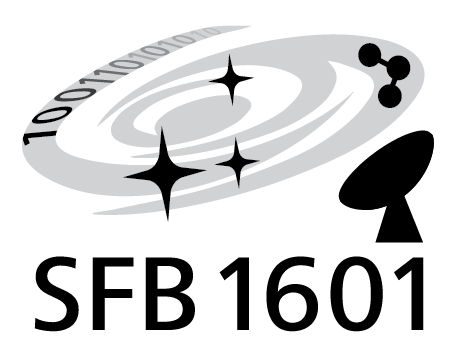The SFB 1601 organises frequent scientific colloquia. Guests are Welcome!
Venue:
University of Cologne, Physics Institutes (Zülpicher Str. 77), Lecture Hall III
or
MPIfR, Auf dem Hügel 69, Bonn, Seminar Room 0.02
The colloquia will start with a coffee/tea reception at 01:45 pm in front of the lecture hall.
April 08, 2025
Christos Karoumpis
SFB 1601 / Argelander Institute for Astronomy
Line intensity mapping the Epoch of Reionization with the Fred Young Submillimeter Telescope
Abstract
Most of the baryonic matter in the universe, which exists primarily as intergalactic hydrogen, was ionized by the far-UV radiation of early galaxies during the Epoch of Reionization (EoR). However, many of these faint galaxies remain undetectable by traditional surveys. Line intensity mapping (LIM) addresses this limitation by measuring the integrated emission from entire galaxy populations. By post-processing the IllustrisTNG300 simulation, we produced mock [CII] line observations tailored to the specifications of the upcoming Fred Young Submillimeter Telescope (FYST).
Our forecasts suggest that detecting [CII] line emission up to z ≈ 6.5 is feasible. A significant challenge, however, is the contamination from CO lines emitted by lower-redshift galaxies, which overlap in observational frequency with high-redshift [CII]. To address this challenge, we modeled the CO foreground and applied a masking technique to mitigate its impact. While [CII] line emission likely dominates at redshifts below 5, extensive masking is required to recover the [CII] signal around z ≈ 6, and more advanced foreground separation methods will be needed to probe redshifts beyond 6. This ongoing work will help unlock the full potential of FYST to trace galaxy evolution during and immediately after the EoR using the LIM technique.
(Cologne)
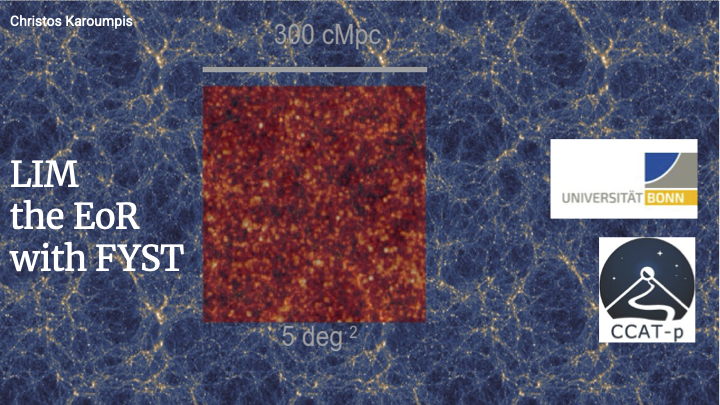
April 15, 2025
Waltraut-Seitter Award: Prachi Khatri
SFB 1601 / Argelander Institute for Astronomy
HYACINTH: HYdrogen And Carbon chemistry in the INTerstellar medium in Hydro simulations
Abstract
Modelling the molecular gas content of galaxies is a highly non-linear, multi-scale problem in astrophysics. On one hand, it is necessary to simulate galaxies in realistic environments as they are affected by outflows and gas accretion from the cosmic web. On the other hand, molecular-cloud chemistry is regulated by conditions on sub-parsec scales. To overcome this challenge, we have developed a new sub-grid model, HYACINTH – HYdrogen And Carbon chemistry in the INTerstellar medium in Hydro simulations – that can be embedded into cosmological simulations of galaxy formation to calculate the non-equilibrium abundances of molecular hydrogen and its carbon-based tracers, namely, CO, C, and C+ on the fly. The model accounts for the unresolved density structure in simulations using a variable probability distribution function of sub-grid densities and a temperature-density relation. Included is a simplified chemical network that has been tailored for hydrogen and carbon chemistry within molecular clouds and easily integrated into large-scale simulations with minimal computational overhead. In this talk, I will introduce the sub-grid model, discuss its validation, and showcase its application to a simulated galaxy in post-processing.
(Cologne)
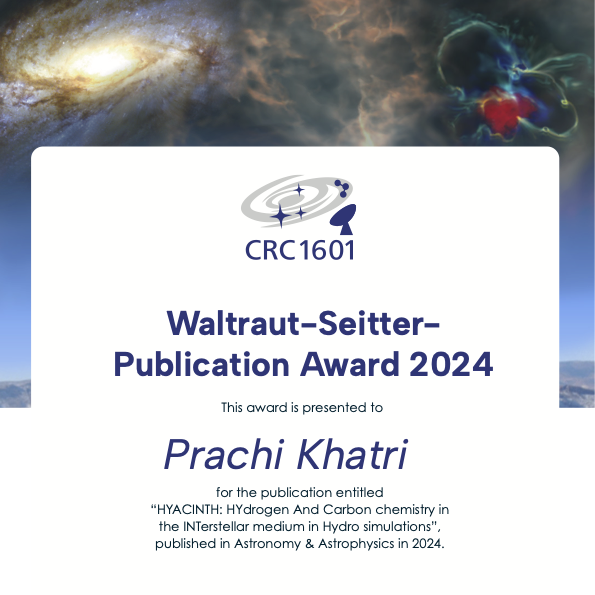
April 29, 2025
Tigran Arshakian
Byurakan Astrophysical Observatory after V.A. Ambartsumian, Aragatsotn Province, Armenia
Radio Beacons of the Cosmos: Unveiling Relativistic Jets in Blazars
Abstract
Blazars, among the most powerful radio beacons in the universe, host relativistic jets launched from the vicinity of the black hole–accretion disk system at the cores of active galactic nuclei (AGN). When these jets are closely aligned with the Earth’s line of sight, the AGN are classified as blazars. Due to the relativistic motion of the jet plasma, their radio emission is significantly boosted, making blazars prime targets for high-resolution radio interferometric observations with the Very Long Baseline Array (VLBA), Global Millimeter VLBI Array (GMVA), and Event Horizon Telescope (EHT).
The MOJAVE program has been monitoring blazars at 15~GHz with the VLBA for over two decades. In this talk, I will present studies of jet structure, dynamics, and polarization properties based on data from the VLBA, GMVA, and EHT. Sub-milliarcsecond-resolution images at 15 GHz of selected blazars allow for the investigation of relativistic transverse waves, as well as the fine structure and kinematics of both quasi-stationary and moving jet components on sub-parsec scales. I will discuss the association of blazars with sources emitting in the X-ray and gamma-ray regimes, as well as very high-energy sources, along with jet models and particle acceleration mechanisms.
(Cologne, Host Volker Ossenkopf-Okada)
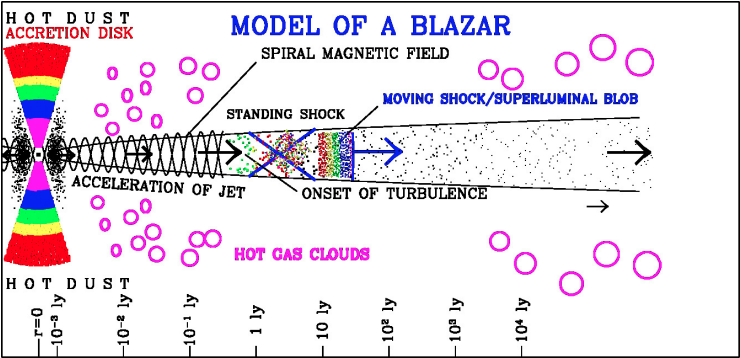
May 06, 2025
Jürgen Stutzki
I. Physics Institute, University of Cologne
CCAT/Chile and UzK
Abstract
This talk will give an overview of the status of the FYST-telescope and the CCAT observatory, presently being shipped to be assembled on Cerro Chajnantor in Chile, and the role of Universität zu Köln within CCAT. I will address CCATs scientific goals, with emphasis on the research areas related to CRC 1601, and the first light and first generation of instrumentation, as well as the perspectives for future generations of instrumentation. In addition, I will elude on the close collaboration with the Chilean scientific community in the context of CCAT, which also offers many opportunities for student exchange. (Cologne)
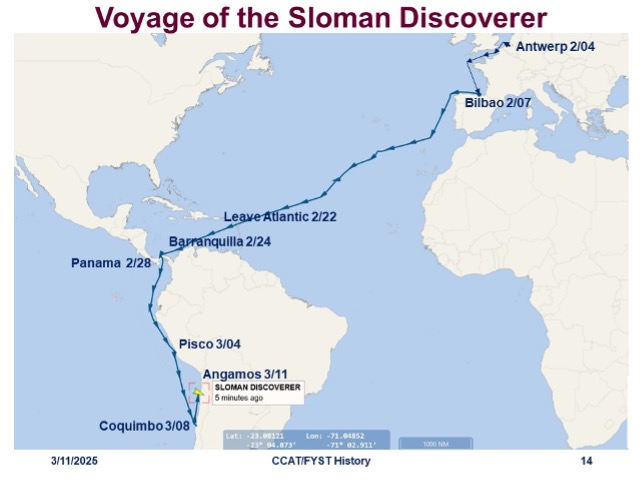
May 13, 2025
Rob Garrod
Departments of Astronomy & Chemistry, University of Virginia, USA
Coupled chemical-dynamical simulations of hot cores and hot corinos
Abstract
The interstellar medium provides an enormous laboratory for the exploration of chemistry of various kinds. Some of the most molecule-rich interstellar objects – known as “hot molecular cores” – are accretions of warm gas and dust that surround young protostars, which ultimately evolve into high-mass stellar systems. Along with their low-mass (solar-type) analogs, “hot corinos”, they are characterized by rich rotational emission spectra that exhibit a wealth of organic molecules of varying degrees of complexity. But the formation of these “hot” (>100 K), gas-phase molecules is closely related to an earlier stage of chemistry that occurs on the surfaces of microscopic dust grains at much lower temperatures. Recent observational, experimental and modeling evidence indicates that some of the most complex molecules that we detect in highly evolved protostellar systems may have a much earlier origin than previously thought.
Here I will present new modeling treatments that allow us to trace the continuum of hot and cold chemistry involving interstellar organics. I will also demonstrate some initial results from new coupled radiation hydrodynamics and gas-grain chemical modeling of hot core/corino systems, and our efforts to simulate observations of their molecular line emission.
(MPIfR Bonn, Host Arnaud Belloche)
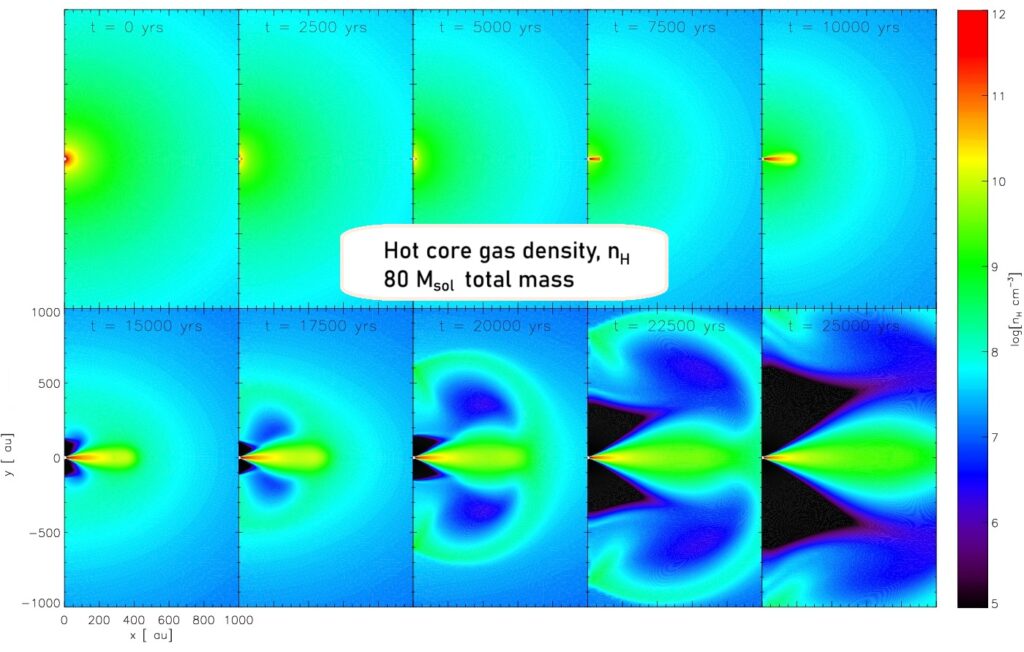
May 27, 2025
David Teyssier
European Space Agency, European Space Astronomy Centre, Madrid, Spain
The (2 billion) promises of Gaia: Data Release 3 and beyond
Abstract
The Gaia mission is transforming our understanding of the Milky Way by delivering the most precise and comprehensive stellar catalog ever created. With over 2 billion sources, Gaia’s data holds the promise of unprecedented discoveries in astrophysics, from stellar evolution to the structure and dynamics of our galaxy. Gaia Data Release 3 (DR3) represented a major milestone, providing the most detailed view of our galaxy to date. Beyond high-precision astrometry and photometry, DR3 included radial velocities for millions of stars, detailed classifications of variable stars, astrophysical parameters, and even the largest catalog of binary systems. Additionally, DR3 introduced new insights into exoplanet-hosting stars, quasars, and the interstellar medium, broadening its impact across multiple fields of astrophysics. Looking ahead, Data Release 4 and 5 will mark another major leap forward, leveraging longer time baselines and unlocking the wealth of information contained in epoch-level data. In this talk, we will showcase some of the breakthroughs made possible by Gaia DR3 and present the exciting prospects for Gaia’s upcoming Data Releases.
(Cologne, Host Ronan Higgins)
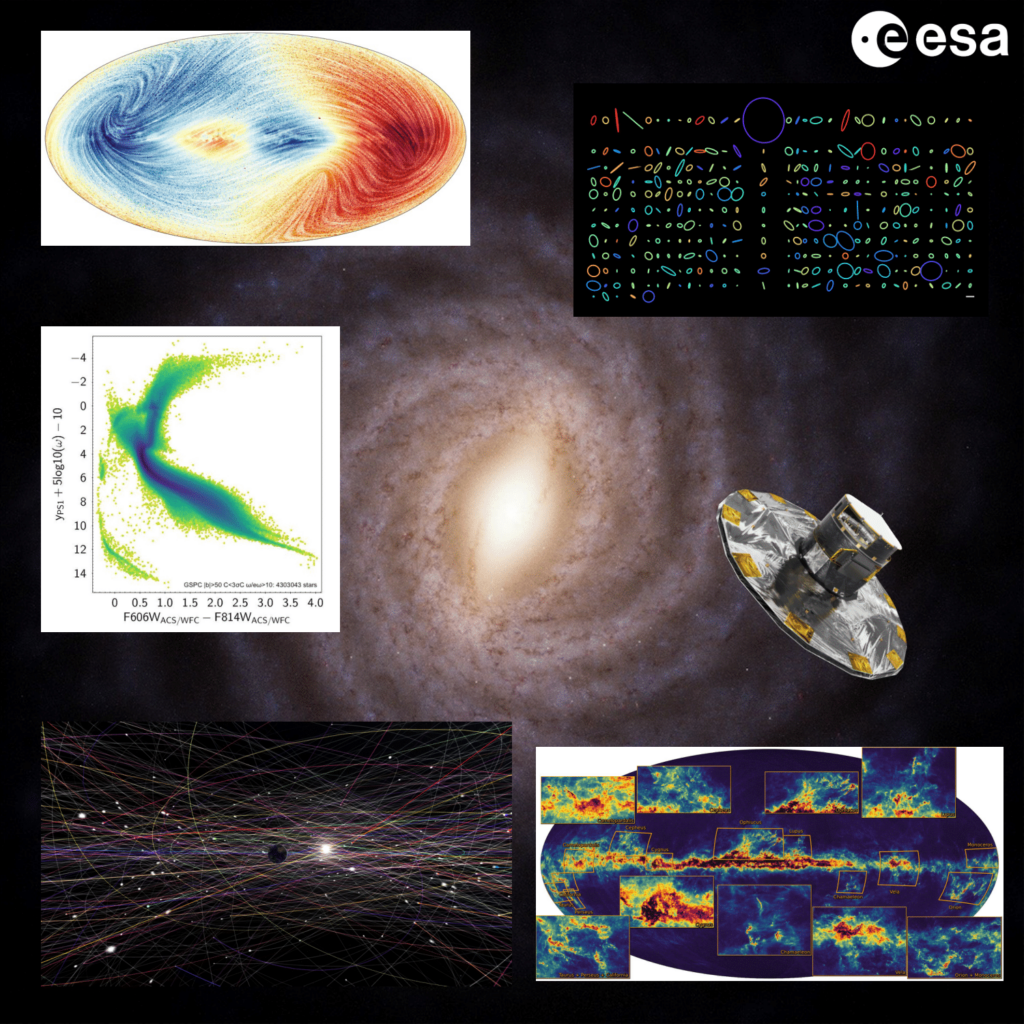
June 02, 2025 extra talk, 4 pm!
Farhad Yusef-Zadeh
Department of Physics and Astronomy, Northwestern University, USA
The Black Hole and its Flaring Activity at the Center of the Galaxy
Abstract
Precise measurements taken at radio and infrared wavelengths over the last two decades have led to the conclusion that a 4.2 million solar mass black hole lies at the center of the Galaxy. These measurements are consistent with the predictions of the Einstein’s general theory of relativity. I will present highlights of recent JWST observations to study the flaring activity of the black hole. The variability of the black hole probes the process of the accretion flow at a distance of few Schwarszchild radius. These observations indicate that the flux of Sgr A* is fluctuating constantly with multiple synchrotron flares per day. I will argue that two distinct populations of particles produce bright and faint synchrotron variable emission. As for the origin of the infrared flares, a number of recent simulations suggest that flares are ejected plasmoids from the accretion disk due to reconnection of the magnetic field lines. Time permitting, I will also discuss the connection between near-IR, radio/submm and X-ray flux variability in the context of plasmoid ejection.
(Cologne, Host Florian Peißker)
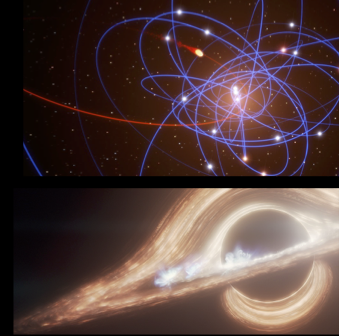
June 03, 2025
Abigail Frost
European Southern Observatory, Santiago, Chile
Massive stellar multiplicity from young to old at high-resolution
Abstract
Massive stars (those greater than 8 solar masses) are hugely important objects in our Universe. They synthesise heavy elements through and produce huge amounts of ionising radiation and distribute this into the interstellar medium. Their winds shape their local star forming regions and also affect the morphology of galactic superwinds (Leitherer 1994). Additionally, gravitational waves are the end product of massive stellar mergers, with black holes and neutron stars colliding to create ripples that are felt across the galaxy (Abbot et al 2016). The effects of a massive star can be irrevocably changed by their multiplicity. At least 90% of massive stars are expected to be in at least a binary system (e.g. Moe & di Stefano 2017) and 70% of these stars are expected to interact with eachother (e.g. Sana+ 2012). In this talk I will discuss I use high-angular resolution observations (namely with the VLTI) to probe complicated massive multiple systems across their lifetimes. For example, I will discuss what the VLTI can tell us about complex massive post-interaction binary systems (e.g. Frost+ 2024, Science) and its role in characterizing and unveiling higher-order multiplicity for massive stars on the main-sequence (e.g. Frost 2025a, A&A) and as they are forming (Frost+ 2025b, in prep).
(Cologne, Host Lucas Labadie)
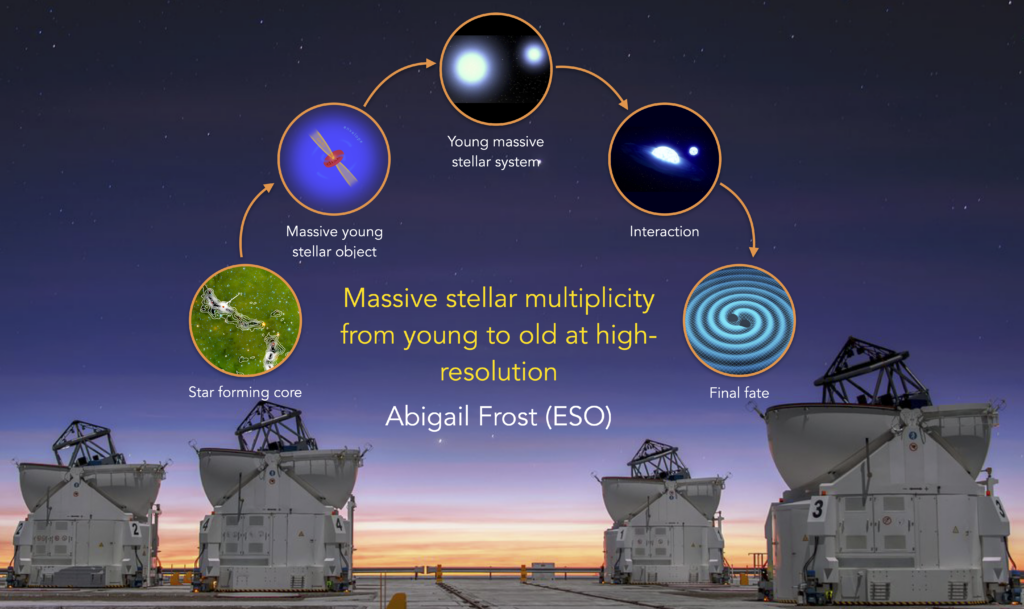
June 17, 2025
Shmuel Bialy
Technion – Israel Institute of Technology, Haifa, Israel
How stars shape Interstellar Gas
via: Supernova, Cosmic-rays, and Turbulence
Abstract
Cosmic Rays —
Stars form within dense molecular gas, where cosmic rays (CRs) regulate ionization, chemistry, and magnetic coupling. Yet measuring the CR ionization rate (ζ) in these environments has remained a persistent challenge. I will present recent JWST observations of the starless core Barnard 68, revealing the first direct detection of CR-excited H₂ emission—a long-predicted but previously undetected signature. This allows a direct measurement of ζ, establishing molecular clouds as vast, naturally occurring CR detectors floating in space.
Supernovae —
In the second part of the talk, I will shift gears to the large-scale structure of the ISM, highlighting how 3D dust maps uncover hidden features such as the recently identified “PerTau shell.” I will discuss the implications of such expanding shells for ISM dynamics and their potential role in driving turbulence and accelerating CRs.
(Cologne, Host Stefanie Walch-Gassner)
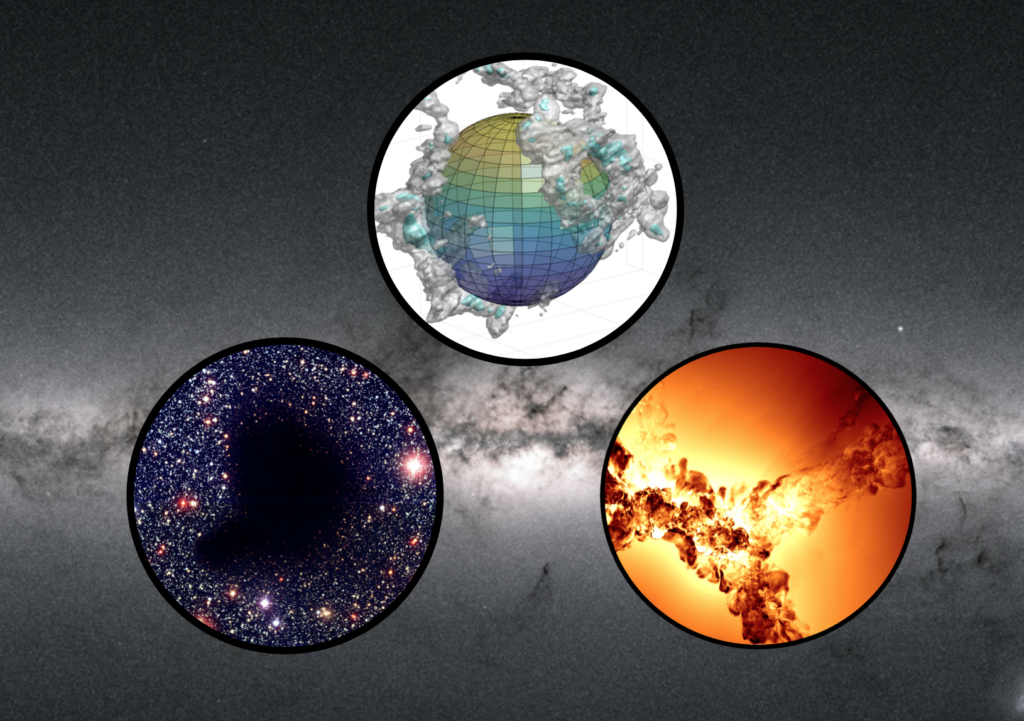
July 15, 2025 – NEW DATE
Fatemeh Tabatabaei
Institute for Research in Fundamental Sciences-IPM, Tehran, Iran
Unveiling role of thermal and nonthermal processes in structure formation and evolution of galaxies
Abstract
Galaxies evolve as their cool gas reservoirs shrink or become inefficient in forming stars over cosmic time. Although it is still under debate, AGN and supernovae feedback can cause a lack of cool gas which fuels star formation. However, more fundamental studies are vital to address what controls gas clouds and structure (star) formation in galaxies. The radio continuum emission provides an ideal tracer of thermal and nonthermal processes in galaxies. Resolved observations, from radio to optical domains, indicate that the nonthermal pressure inserted by cosmic rays and magnetic fields can play an important role in the energy balance of the interstellar medium which can decelerate the formation of massive stars or trigger winds and outflows. Unresolved multi-wavelength observations in nearby galaxy samples show that the nonthermal pressure increases with star formation activity super-linearly indicating its significance looking back at earlier cosmic times when star formation rate was higher. This is confirmed by our recent radio SED analysis of high-z starburst galaxies in the COSMOS field observed with MeerKAT/VLA/GMRT.
Reviewing these studies, I will present our recent findings and discuss future steps needed to shed light on the topic.
(Cologne, Host: Volker Ossenkopf-Okada)
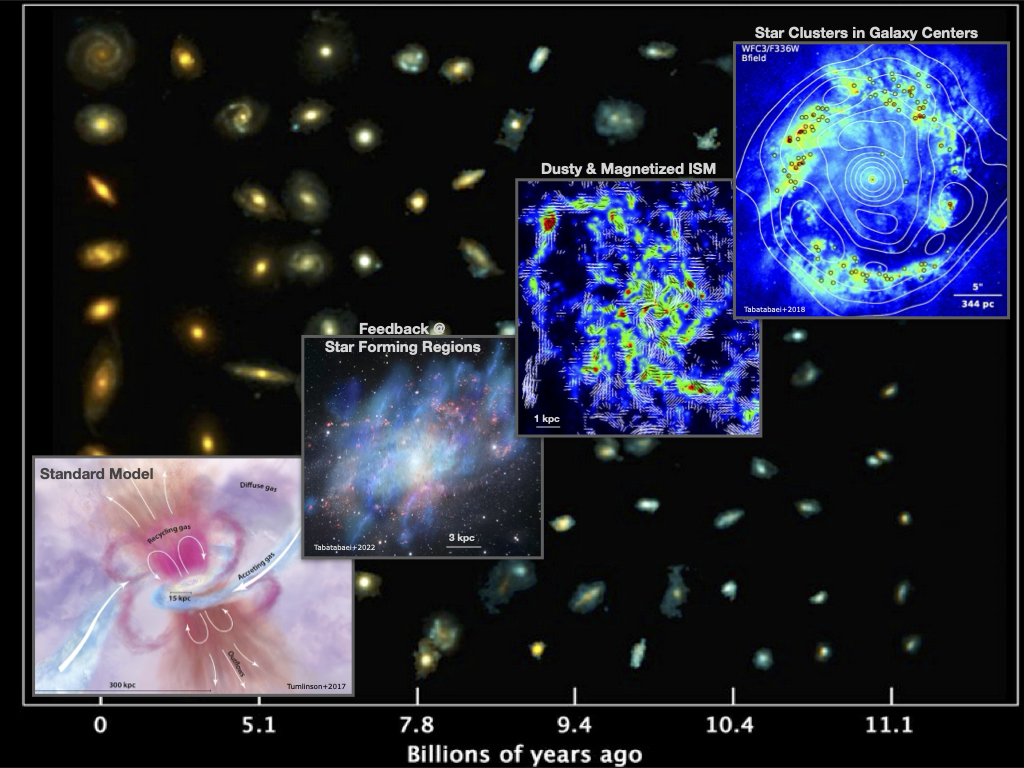
July 08, 2025 new date!
Stefanie Walch-Gassner
SFB 1601 / I. Physics Institute
The energetics of molecular clouds: reassessing the role of gravity
Abstract
The intricate dynamics of molecular clouds, pivotal to the formation of stars, have been a subject of our ongoing investigation. In the SILCC-Zoom simulation suite, we investigate the formation and evolution of molecular clouds within their galactic, multi-phase ISM environment. The adaptive mesh refinement (AMR) magneto-hydrodynamics simulations include a chemical network and radiative transfer.
The clouds are divided into coherent and hierarchical substructures using dendrograms. A detailed virial analysis of the identified substructures unravels their energetics. We can show that substructures that mostly consist of atomic, rather than molecular gas, are always unbound. Only denser, molecular structures become “bound”, but often they seem to be stabilized by ram pressure or thermal pressure rather than truly bound by self-gravity. Only a few structures are clearly gravitationally bound. Our results put the role of gravity to the test and have important implications for the low star formation rate and efficiency in molecular clouds.
(Cologne)
Picture Credit: Fig 3 from Ganguly, SW, + 2024, MNRAS, 528, 3630ff.

available dates:
14.10.2025
21.10.2025 – SFB1601-PL
28.10.2025 – Maria Jose Maureira (Host Arshia Jacob)
04.11.2025 – SFB1601-PL
18.11.2025
25.11.2025 – SFB1601-PL
02.12.2025 – NOT in Cologne!
09.12.2025 – SFB1601-PL
16.12.2025
13.01.2026 – SFB1601-PL
20.01.2026
27.01.2026 – SFB1601-PL
03.02.2026
